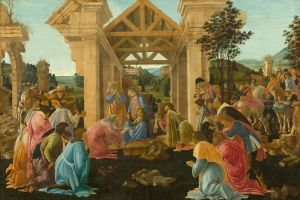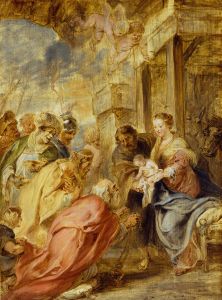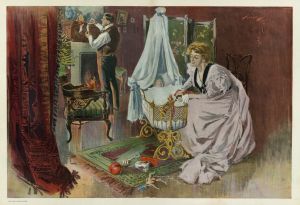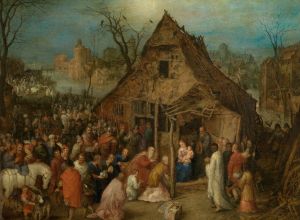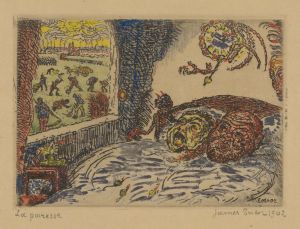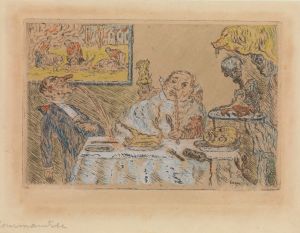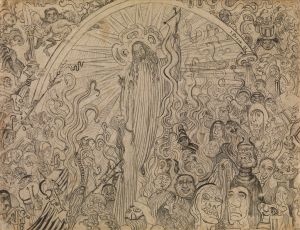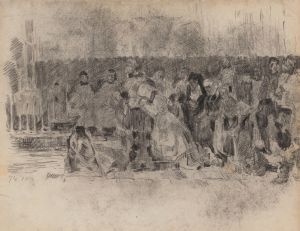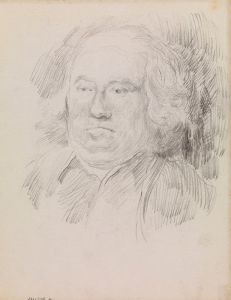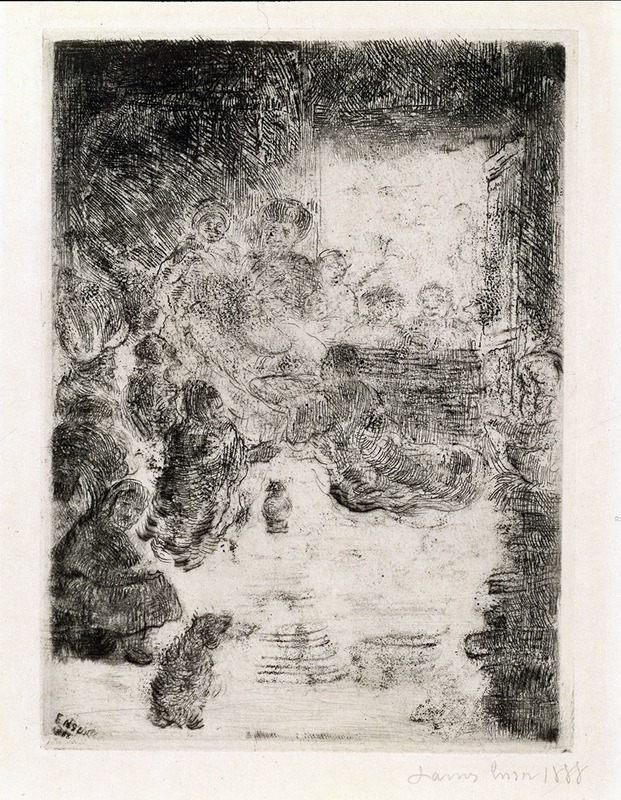
The Adoration of the Shepherds
A hand-painted replica of James Ensor’s masterpiece The Adoration of the Shepherds, meticulously crafted by professional artists to capture the true essence of the original. Each piece is created with museum-quality canvas and rare mineral pigments, carefully painted by experienced artists with delicate brushstrokes and rich, layered colors to perfectly recreate the texture of the original artwork. Unlike machine-printed reproductions, this hand-painted version brings the painting to life, infused with the artist’s emotions and skill in every stroke. Whether for personal collection or home decoration, it instantly elevates the artistic atmosphere of any space.
James Ensor's "The Adoration of the Shepherds" is a notable work by the Belgian artist, who is renowned for his unique style that often blends elements of Impressionism, Symbolism, and Expressionism. Ensor, born in 1860 in Ostend, Belgium, was a pivotal figure in the transition from 19th-century realism to 20th-century modernism. His work frequently features fantastical imagery, vibrant colors, and a distinctive use of light and shadow.
"The Adoration of the Shepherds" is one of Ensor's interpretations of a traditional biblical scene, a subject that has been explored by many artists throughout history. The painting depicts the moment when shepherds visit the newborn Jesus, a scene that is part of the Nativity story in Christian theology. Ensor's rendition of this scene is characterized by his typical use of vivid colors and dramatic contrasts, which imbue the work with a sense of otherworldliness and emotional intensity.
Ensor's approach to religious themes often includes a layer of irony or critique, reflecting his complex relationship with organized religion and societal norms. In "The Adoration of the Shepherds," Ensor may be seen as both embracing and subverting traditional religious iconography. His use of exaggerated expressions and unconventional compositions challenges the viewer's expectations and invites a deeper contemplation of the scene's spiritual and human elements.
The painting is notable for its dynamic composition and the way Ensor uses light to guide the viewer's eye across the canvas. The figures of the shepherds are rendered with a sense of immediacy and presence, their expressions capturing a range of emotions from awe to contemplation. Ensor's use of color is particularly striking, with bold hues that create a sense of movement and vitality within the scene.
Ensor's work, including "The Adoration of the Shepherds," is often seen as a precursor to many modern art movements. His innovative techniques and willingness to explore complex themes have earned him a lasting place in art history. The painting reflects Ensor's broader artistic concerns, including his interest in the grotesque and the sublime, as well as his fascination with the interplay between the sacred and the profane.
While specific details about the creation and exhibition history of "The Adoration of the Shepherds" may not be extensively documented, the painting remains an important example of Ensor's oeuvre. It exemplifies his ability to reinterpret traditional subjects through a modern lens, challenging viewers to reconsider familiar narratives and explore new dimensions of meaning.
Ensor's legacy as an artist is marked by his influence on subsequent generations of artists, particularly those associated with Expressionism and Surrealism. His willingness to push the boundaries of artistic convention and explore the depths of human experience continues to resonate with audiences today. "The Adoration of the Shepherds" stands as a testament to Ensor's unique vision and his enduring impact on the world of art.





